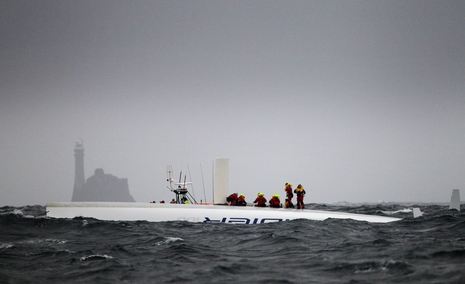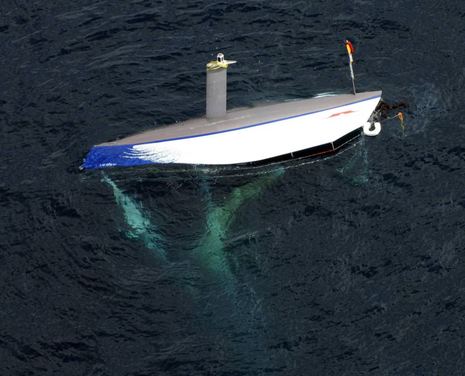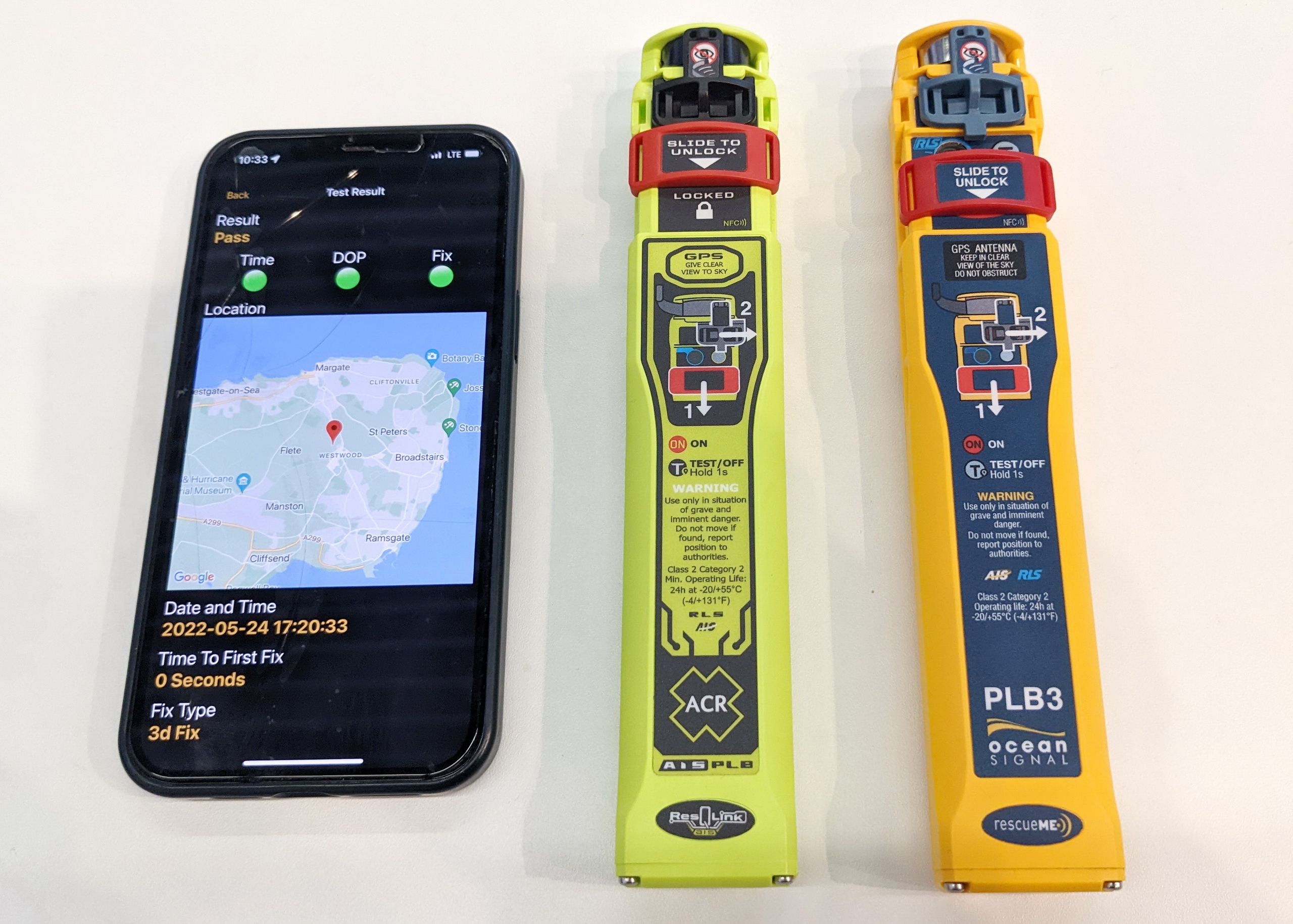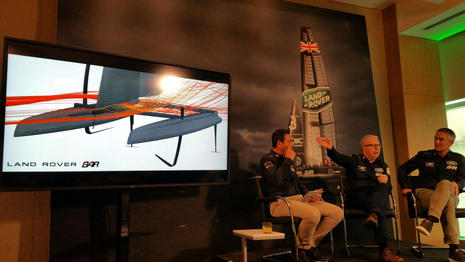Racing capsizes, did satellite beacons help?
Man, can you imagine how many scary moments preceded this photo? The remarkable thing is that all 21 crew members of Rambler 100 survived her capsize in rough and foggy conditions just after rounding Fastnet Rock on Monday evening. The yacht — which I gawked at as Speedboat in Newport last fall — purportedly turned turtle just 30 seconds after her keel snapped off, leaving several crew caught inside and upside down. EPIRBs and PLBs had something to do with the 100% successful rescue, though it’s hard tell which and how…
This Rolex video gives a pretty good overview of the rescue efforts, but for a real taste of what it was like aboard Rambler you should listen to navigator Peter Isler’s phone interview with Sailing World. Isler mentions that it was a “pocket EPIRB” (aka PLB) that got them found but ACR has been told that one of their GlobalFix Category 1 EPIRBs was used to alert the Royal National Lifeboat Institute of their distress. The Irish Times also mentions the PLB along with some smart use of set and drift prediction software by some Coast Guard radio operators.
If the EPIRB did indeed fail to activate for several hours, it will be good to figure out why. But at this point it seems obvious that redundant safety electronics helped the Rambler crew, as did all the inflatable life jackets they were wearing and their efforts to help each other both on the overturned hull and in the water. And of course all the skilful Irish rescue teams. I particularly enjoyed this “day after” story.
Unfortunately the crew of WingNuts, seen below with obstruction markers added, did not all survive its capsize when storm cell winds hit over 100 knots during the Macinaw Race. It’s not clear if EPIRBs or PLBs were part of the rescue efforts. An early official report mentions that each crew person had a personal beacon, but I’ve heard that those may have been Spot Messengers, which aren’t really appropriate to the task. Meanwhile this in-depth Sail report suggests that it was a whistle and some excellent seamanship by some fellow racers who saved those who weren’t hurt by the initial violence. An investigation is planned, and readers may know about other valuable details of these distress situations. Be careful out there!
















I am planning some off shore races with my 12 meter sailboat and just ordered the ACR ResQLink model PLB. Our older now out of date boat mounted 406 EPIRB will be repalced by this PLB. Low price, small size and ACR dependability is what made my mind up.
Incredibly absorbing stories with those good links and the dramatic videos. Wow, US weather has gotten positively vicious in the last couple of decades. The weather off the British isles has always been tough, and we nearly lost a Dutch friend as he had to abandon a Swedish yacht “Andriette” 75 miles south of the Scilly Isles during a long delivery from St. Lucia to Malmo, Sweden.
http://www.noonsite.com/Members/sue/R2011-07-14-2
Apparently the Andriette was salvaged and the delivery resumed after repairs. Another case of an Epirb saving the bacon.
Reed s/v Cayenne lying Cascais, Portugal
I understand that all yachts participating in this year’s Fastnet were mandated to carry on-board GPS tracking devices.
Race control should have known the exact positions of the yachts at all times.
FYI – In the UK marine rescues are handled by Coastguard MRCC (Maritime Rescue Coordination Centres) who will determine what rescue assets are required and may call on RAF, Royal Navy, Search & Rescue helicopters and RNLI resources from Ireland, UK or continental Europe if necessary.
Under-funded but greatly respected.
The Fastnet has always been a very “iffy” event. Sometimes the luck runs out, as the Celtic Sea can be very unforgiving. Doing the hop from Wales to Ireland is something I take very seriously always and only in the right condx, which makes it a rare event.
Obviously many thanks are due to the ICG guys at Valentia, and also to Shux and crew at Falmouth IMRCC.
Steve
Roger, The Fastnet fleet used Yellowbrick trackers, but I don’t know what the track interval was or whether the system had a way to quickly flag vessels that stopped communicating. Here is a tracking site that let’s you replay the race, though it seems that Rambler’s track has been removed:
http://yb.tl/fastnet2011
Note that Yellowbrick has a new tracker coming out very soon:
https://panbo.com/archives/2011/08/yellowbrick_3_the_iridium_9602_strikes_again.html
Wow! If you set the Fastnet tracking site to about 1800 last Monday — when Rambler and the other lead monohulls were just rounding the Rock — note that the 140-foot tri Maxi Banque Populaire was already almost finished back in Portsmouth, which took an astounding 7 hours plus off the previous record. I’m picturing some proud French sailors: http://goo.gl/568mu
The rescue was co-ordinated from Valentia MRCC in Ireland And several RNLI lifeboats from nearby stations and both the Shannon and Cork based rescue Helicopters and an Irish Naval vessel were involved.
That particular corner of Ireland has significant rescue assets and is within 20 minutes flying time of two choppers and close to several lifeboat stations.
It’s also not far from land ad wrll
Several competitors sailed by but did not see the stricken Rambler 100.!!
Forget the PLB’s, which have their place, but the boats sailing past would have seen personal strobe-lights, if the survivors’ lifejackets had them fitted.
Divers use personal strobes. They are low tech and cheap, costing less than €30
When you are awaiting rescue, attracting attention to your precise position is essential.
When the rescue services are alerted to your position, they still have to find you as a blob in the water and current and gps inaccuracy +/- 15 meters will have made your position different to the EPIRB transmitted position. The longer it takes for the rescue service to arrive, along with tidal stream will have made the search position different, as exemplified in the comments of the navigator of “Rambler 100” who said that they could see the RNLI lifeboat arriving at a position several hundred yards from where he was. How many of the rescued had effective lights! An uninflated lifejacket does not show a light. A personal strobe can be manually activated.
Apparently they did have strobe lights: http://goo.gl/FMa2D
Though I’ve also read that they were LED flashlights used for trimming which the crew on the overturned hull grouped together for maximum effectiveness. It may be a while before all the details are clearly sorted.